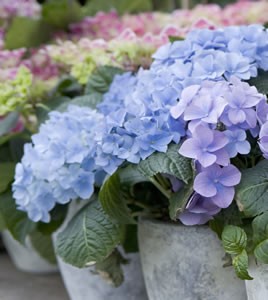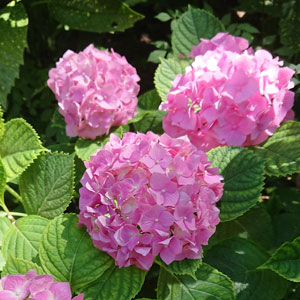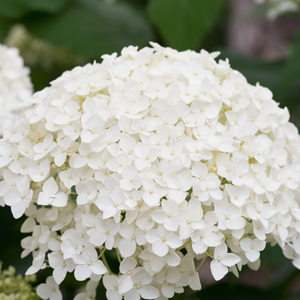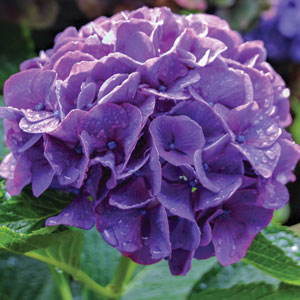Hydrangea Growing Guide

What is Hydrangea?
Hydrangea (Hydrangea spp.) is mainly a deciduous perennial shrub. It is part of the Saxifragraceae family and mainly originated in Asia with some species from America. There are around 100 species of deciduous and evergreen shrubs, small trees and climbers in this genus. Hydrangea macrophylla is a common known variety of Hydrangea. It is known for their large round shaped flowers that come in the colour of white, pink and blue. Flowering occurs during Summer through to Autumn. Their flower colour can be enhanced or altered depending on the soil – acid soils produce blue flowers and alkaline soils produce red and pinks. Foliage is large with serrated edges and mid to dark green in colour. It is native to Japan. Oak leaf is another variety of Hydrangea and is different to many other types of Hydrangea. It is native to America where its foliage resembles the maple leaf. During Autumn the foliage will turn red. The flowers are white and come in a cone shape. Most hydrangeas prefer a semi shade to full shade position in the garden with rich well drained soil. Some varieties will tolerate full sun. The majority of Hydrangeas love morning sun and should be protected from the hot afternoon sun. Also remember to not let them dry out, or they will wilt.
Benefits of Growing Hydrangea
Hydrangea bring colour and style to shaded areas of the garden. They are must for any cottage or shade loving garden and suitable to grow in large pots or containers.
How to Grow Hydrangea
Climatic Zones
Cool to tropical.
Plant Size
Height: 50cm-3m, Width: 50cm-2m
When To Plant Hydrangea
Plant anytime.
Soil Preparation
They like moist, rich, well-drained. Mix through some well broken down organic compost before planting.
How To Plant Hydrangea
Plant in semi shade to full shade, with the plant crown at soil level. Spacing will vary depending on the variety.
Hydrangea Plant Care
Regular watering is required, especially in late Spring and through Summer. Deep soaking once or twice a week is ideal. Have a saucer of water underneath pots.
Mulch annually to retain the moist and keep the roots cool.
Use a complete fertiliser in Spring.
In Winter while the plant is dormant, you can use a fertiliser designed for the pH (colour). This can boost the vibrance of the flowers.
Prune back by about 1/3 when dormant in Winter. Cut back to double leaf buds to encourage flowers the following year. Remove any old, dead or damaged wood.
Recommended Hydrangea Varieties
Hydrangea are reliable shrubs that produce a fantastic display every Summer with clusters of pink, blue or white flowers that are hard to miss.










